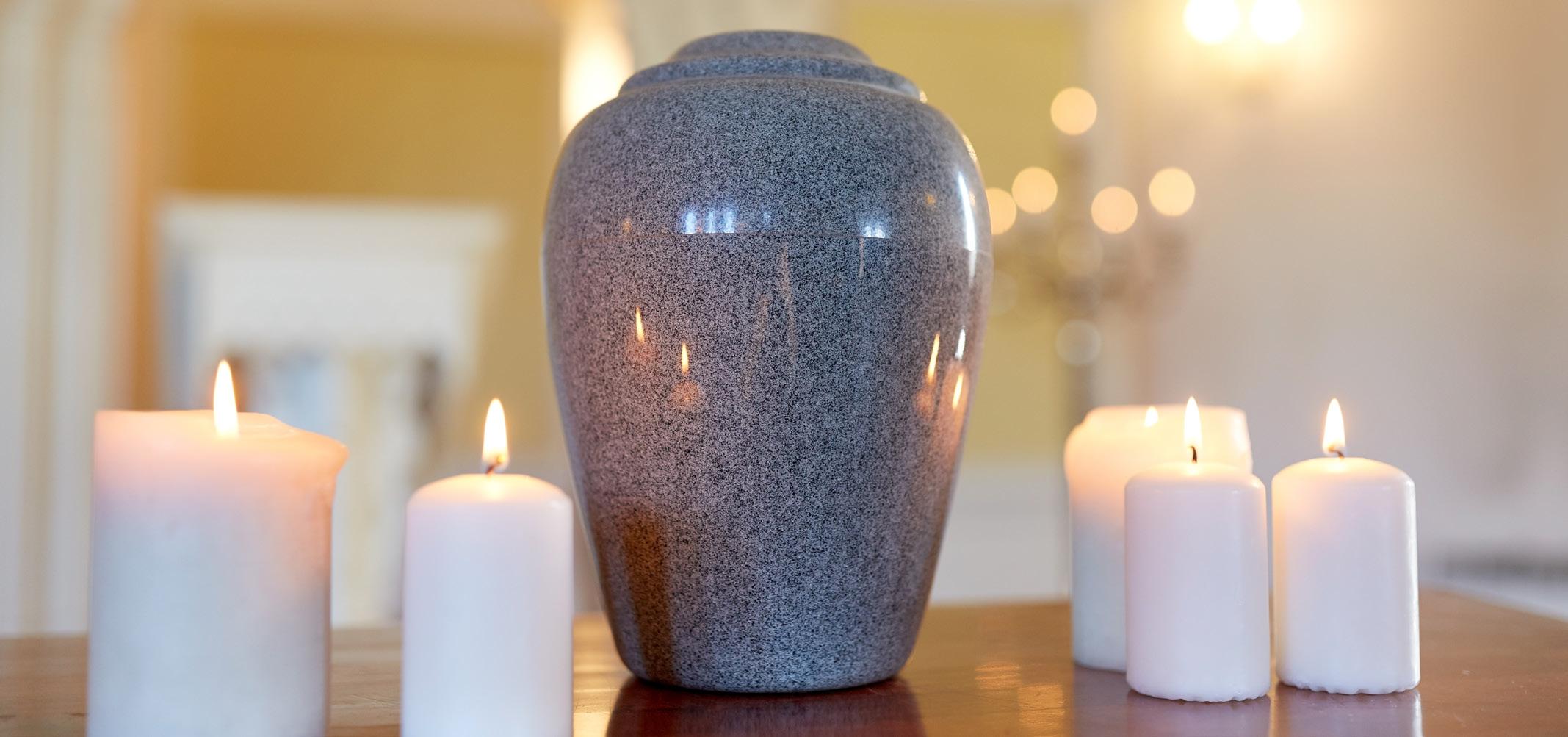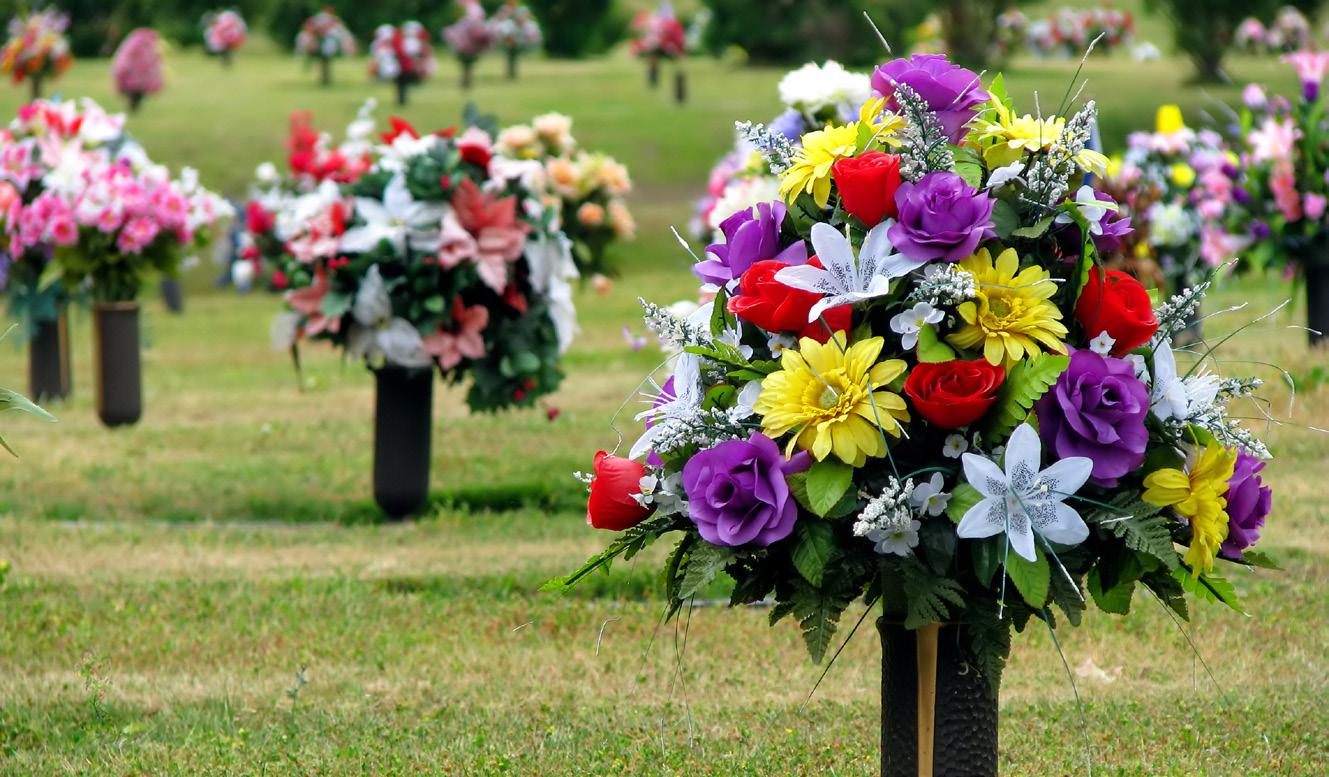
8 minute read
Ensuring Respect for the Dead
Ensuring Respect for the Dead by Alan D Wolfelt Ph.D
Families often simply need education about the permanent memorialisation options available to them.
Alan D Wolfelt, respected author, educator and consultant to funeral service explores the critical importance of helping families understand the value of permanent memorialisation.
I recently overheard an adult son say, “Dad is dead. We don’t need a casket for his body. We are just going to cremate him and be done with this. We will just scatter him to the winds.”
His comment reminded me of a story said by a spiritual teacher Ram Dass. An old man is too weak to work in the garden or help with household chores so he just sits on the porch, gazing out across the fields, while his son tills the soil and pulls up weeds.
One day, the son looks up at the old man and thinks, “What good is he now that he is so old? All he does is eat up all the food! I have a wife and children to think about. It’s time for him to be done with life!” So the son makes a large wooden box, places it on a wheelbarrow, rolls it up onto the porch and says to the old man, “Father, get in.” The father lies down in the box and the son puts the lid on the box, then wheels it toward the cliff.
At the edge of the cliff, the son hears a knock from inside the box. “Yes, Father?” the son asks. The father replies “Why don’t you just throw me off the cliff and save the box? Your children are going to need it one day.”
As cremation becomes more and more prevalent in today’s world, ‘the box’ is becoming less and less important. Many families no longer value caskets. In choosing cremation, they also typically believe they are opting for quick and efficient. As you know, today’s mantra tends to be ‘faster, cheaper, easier’.
But readers also know that when it comes to funerals, faster, cheaper and easier are

generally much less effective at helping grieving families embark on a healthy path to healing.
In fact, slower and more complex is almost always better at helping families dose themselves with the ‘whys’ of the funeral ritual. The more elements-rich and personalised a funeral is, the more it helps mourners transition from life before the death to life after the death. Educating families about why each funeral element is used and how it helps them meet their mourning needs is now
Scattered remains, of an essential role for funeral directors and funeral homes that still want to be in course, engender business a decade from a different set now. of challenges for Another element today’s families. families need your help in understanding and embracing is the need for permanent memorialisation. In forsaking ‘the box’ and choosing to take home or scatter cremated remains, many families simply do not fully anticipate the long term repercussions for their choice. Traditionally, the casket housed the body of the person who died and, upon burial or entombment, became the tangible, seeable, knowable final resting place. Cemeteries have long been the place where you go to visit and pay respects to your loved one, and casketing was a sequential step in the process. Then along came cremated remains burial and cremation niches, which served the same purpose.
Now, however, more and more families are choosing to take the cremated remains home with them in a decorative urn or container or sometimes a simple cardboard box. One 2014 survey in the US showed that 54% of California and Washington residents had cremated remains in their homes, and I’m sure that number has only increased. Many family homes now house the cremated remains of more than one person.
I must say that the family’s impulse to keep their cremated loved one close can be borne out of love, making it an honourable and even mourning-fostering choice. In the early weeks and months after the death, having the urn on the fireplace mantle can indeed be an effective way for the primary mourners to continue to acknowledge the reality of the death, remember the person who died, initiate discussions with others and encounter the pain of loss.
But in the longer term, as you know all too well, mantled remains often become problematic. What if they’re accidentally spilled? Will anyone want to safeguard and display them 10, 20 or 50 years from now? What happens when more people in the family die? How many cremation urns can one mantle hold? A funeral director friend recently shared with me a story about a county landfill worker who discovered a box of cremated remains amid the trash and opted to bring them to the funeral home rather than treat them as garbage.
Scattered remains, of course, engender a different set of challenges for families. In the short-term, scattering cremated remains in a location important to the family or the
... continued from page 17
person who died can feel like a good fit. After all, the person who died is being honoured in a personal way, and the scattering is often surrounded by ceremony and attended by at least several people who were closest to the person who died and to each other.
But in the long run, scattering often creates a vacuum for the family. Where can one go to pay respects to the person who has died? The particulars of the location are often lost to time, and even when the location is known, it is often remote or difficult to visit. And what happens when the cremated remains have been scattered to multiple locations? This practice can naturally create especially confusing or even upsetting thoughts and feelings down the line.
I realise I’m preaching to the choir here in bemoaning the many problems that ensue when permanent memorialisation isn’t undertaken. But I also believe education can counter this unfortunate trend. With each family that chooses cremation, I urge you to spend some time explicitly teaching them about the benefits of permanent memorialisation.
First, it provides a suitable place to mourn, which helps people heal. Second, it gives all mourners access to a public location where And don’t forget that for those families they can go to pay respects and connect with that take the cremated remains home with the person who died. Families sometimes do them, there is an ongoing need to advertise not consider that others who live outside the and offer permanent memorialisation. family home may want to be able to visit the Displaying that urn in their home may in fact final resting place. help them with their grief in the first couple Third, the cemetery, mausoleum themselves ready to choose a permanent or cremation garden will be around for resting place. generations to come. Grandchildren and great-grandchildren and on down the line It was renowned British statesman Sir will find meaning in having a fixed, marked William Gladstone who said, “Show me place that anchors their personal histories. the manner in which a nation cares for its And fourth, the permanent resting place is dead and I will measure with mathematical a practical choice. Families can rest easy exactness the tender mercies of its people, knowing that the cremated remains are being their respect for the laws of the land and taken care of in perpetuity. The idea of having their loyalty to high ideals.” In educating to pass along urns to the next generation or families about permanent memorialisation amassing more and more urns on a and helping them make choices that shelf (or in a closet!) is usually are good for them, you will be enough to help families realise making a long-term difference that keeping the remains at Many family in your community. home is not a viable longterm solution. homes now house the cremated Ours may be a throw-away, quick fix Families often simply remains of more society, but in facilitating need education about the permanent memorialisation than one person. memorialisation, you will be counteracting this harmful options available to them. trend. Generations from now, They know they want cremation, families will still be visiting their but they don’t have any idea about ancestors in your community’s what choices they have in dealing with the cemeteries and cremation gardens. cremated remains. The dead will be cared for respectfully and I recommend creating a handout on community of life. memorialisation options and locations in of years, but beyond that they may well find with an understanding of the sanctity and your community. You know that columbarium And that box in the story at the beginning niches, ground burials and scattering gardens of the article? It’s not really about the box are available nearby, but consumers often itself. It’s about respect for the dying and do not. Many who were considering taking the dead. Permanent memorialisation is one the remains home or scattering them will of the most important ways in which we as a be relieved to know there are established culture can ensure that respect, regardless of locations and processes in their community. means of disposition.
Thank you for championing memorialisation in your community. In doing so, you are not only looking out for the families in your care, you are also fostering the long-term well-being of your community and acting with the highest of ideals.

Alan D Wolfelt, Ph.D, is a respected author, educator and consultant to funeral service. He advocates for the value of meaningful funeral experiences in his death education workshops across North America. For more information visit www.centerforloss.com









